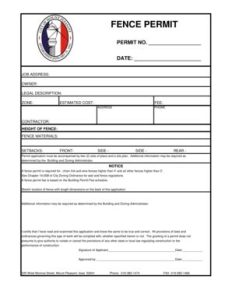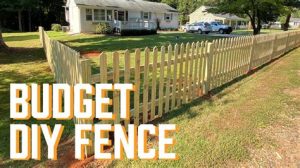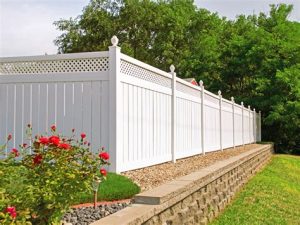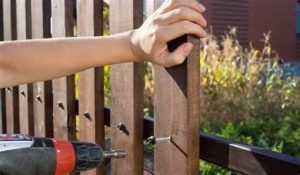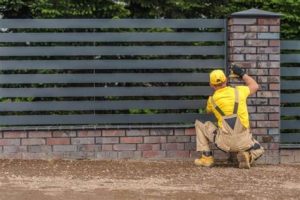Discover essential tips on property line regulations, boundary identification, neighbor consultations, fence material selection, and permit acquisition for your fencing project.Installing a fence can enhance your property’s privacy, security, and aesthetic appeal, but it’s crucial to do so with careful consideration of local regulations and neighborly relations. Whether you’re enclosing a yard, creating a garden space, or simply delineating your property, knowing the rules that govern property lines is essential to avoid disputes and potential legal issues. In this guide, we’ll walk you through the key steps to ensure a smooth installation process, from understanding property line regulations and accurately identifying boundaries to engaging your neighbors and selecting the right materials. We will also discuss the importance of obtaining the necessary permits and approvals, ensuring that your fence not only meets your needs but is also compliant with local laws. Let’s dive into the essential guidelines for installing fences near property lines!
Understanding Property Line Regulations
When considering the installation of a fence, it is crucial to understand the property line regulations that govern such projects. Each municipality has its own set of rules regarding fences that can dictate how close to the boundary you can build and the height limitations. Familiarizing yourself with these regulations is the first step in ensuring a smooth installation process.
Many areas require homeowners to set back their fences a certain distance from the actual property line. This is to avoid disputes with neighbors and to comply with zoning laws. Additionally, you might need to check if there are any setback requirements or easements that could affect where you can place your fence.
It’s also advisable to consult your local zoning office or building department before beginning your project. They can provide specific information regarding fence height regulations and any environmental considerations that may impact your installation, especially if your property is close to a street or public right-of-way. Always ensure that you are fully informed about your legal obligations to prevent costly mistakes.
Identifying Property Boundaries
Identifying property boundaries is a crucial step in the process of installing fences. Establishing where your land ends and your neighbor’s begins not only helps you avoid disputes but also ensures that the fence construction adheres to local regulations. There are several techniques and resources available to help you accurately determine your property’s limits.
One common method is to refer to your property deed, which typically includes a legal description of your land. This document outlines the dimensions and boundaries, often marked by landmarks or distances. Additionally, local property records and survey maps can provide valuable information about established boundaries in your area.
If you are still uncertain about the exact lines, it may be prudent to hire a professional land surveyor. A qualified surveyor will use specialized tools and knowledge to accurately delineate your property lines. This can save you from potential conflicts with neighbors and ensure that your fence installation starts on solid ground.
Consulting with Neighbors
When planning to install a fence near property lines, one of the most crucial steps is consulting with neighbors. Effective communication can help avoid misunderstandings and foster good relationships, which are vital for a harmonious living environment.
Engaging in a friendly discussion about your fencing plans demonstrates respect for your neighbors’ perspectives.
- Schedule a Meeting: Arrange a convenient time for both parties to ensure an open dialogue.
- Explain Your Intent: Clearly articulate the reasons for the fence installation, whether it be for privacy, security, or decorative purposes.
- Address Their Concerns: Encourage neighbors to voice any concerns or objections they may have, and be open to adjusting your plans accordingly.
- Discuss Property Lines: Verify the property boundaries together to ensure that you are both clear on where the fence should be placed.
By taking these steps, you not only ensure compliance with local regulations but also foster goodwill among neighbors. A collaborative approach can lead to mutually beneficial solutions, such as joint responsibilities for maintenance or shared costs that can make the installation more manageable.
Moreover, a thoughtful consultation process can enhance your neighborhood’s community spirit and deter potential disputes in the future. As you navigate fence installation, remember that communication is key and can pave the way for a successful project.
Selecting Suitable Fence Materials
When planning to install a fence near property lines, choosing the right materials is crucial for both functionality and aesthetics. The materials you select can have a significant impact on the durability and overall appearance of your fence.
| Material Type | Advantages | Considerations |
|---|---|---|
| Wood | Classic look, customizable, environmentally friendly | Requires maintenance, susceptible to rot and pests |
| Vinyl | Low maintenance, available in various styles, long-lasting | Can be more expensive, limited color options |
| Chain Link | Cost-effective, durable, easy to install | Not very private, may require slats for visibility |
| Metal | Strong, long-lasting, often requires little maintenance | Can be costly, difficult to install |
| Composite | Environmentally friendly, low maintenance, resistant to weathering | Can be expensive, fading may occur over time |
When selecting your fence materials, it’s important to consider not only the look but also the local climate, your budget, and any homeowners’ association regulations that may apply. For instance, some materials may perform better in wet or humid conditions while others might be best suited for drier climates.
Additionally, think about the purpose of your fence. Is it primarily for privacy, security, or decorative purposes? Different materials serve these needs in different ways, and understanding the primary function will help guide your decision.
Lastly, it is advisable to consult with professionals or local fencing contractors who can provide insight into which materials work best in your specific area. Not only can they assist you in choosing the most suitable fence materials based on your unique situation, but they can also help ensure your fence meets any local regulations.
Obtaining Necessary Permits and Approvals
Before you start planning the installation of a fence, it is crucial to understand the process of obtaining the necessary permits and approvals. This is not just a bureaucratic step; it’s essential for ensuring that your fence complies with local regulations and avoids potential disputes with neighbors.
Each municipality has its own regulations regarding fences, and these can vary significantly. Generally, you will need to check with your local zoning office or municipal planning department.
- Property Line Surveys: You may need a formal survey to precisely identify your property boundaries.
- Building Permits: Some areas require a building permit for fence installation, especially if the structure exceeds a certain height.
- Height and Design Restrictions: There might be specific regulations regarding how tall or how the fence should be designed.
- Homeowners Association (HOA) Approvals: If you live in a community governed by an HOA, you will likely need their approval as well.
In addition to knowing what approvals you need, it’s important to submit your applications accurately and gather all requested documentation. This can include site plans, elevation drawings, and even photographs of the installation area. By ensuring that all documentation is complete, you can avoid unnecessary delays in the permitting process.
Frequently Asked Questions
What are the main guidelines for installing fences near property lines?
Before installing a fence near property lines, it is essential to check local zoning laws, property surveys, and any homeowner association regulations to clarify where you can legally place your fence.
Why is it important to know the exact property line?
Knowing the exact property line helps to avoid disputes with neighbors and ensures that the fence complies with local regulations, helping to prevent legal issues.
What might happen if I build a fence on my neighbor’s property?
Building a fence on your neighbor’s property can lead to disputes, potential legal action, and the requirement to remove the fence, as it is considered encroachment.
How can I determine the exact property line?
You can determine the exact property line by reviewing your property deed, hiring a professional surveyor, or referring to local land maps or property records.
What factors should I consider regarding neighbors when installing a fence?
Consider discussing your fence plans with your neighbors to maintain good relationships, and check any shared easements that may affect the installation.
Are there specific heights or styles of fences I should be aware of?
Yes, many municipalities have restrictions on fence heights and styles, so it’s crucial to check these regulations beforehand to ensure compliance.
What is the best way to keep the installation process smooth and neighbor-friendly?
Communicating with your neighbors beforehand, choosing an aesthetically pleasing fence that respects their views, and following regulations will help ensure a smooth installation process.
